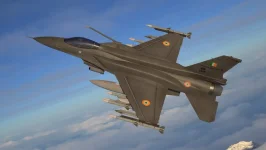- Views: 2K
- Replies: 3

In a move aimed at bolstering defence ties and countering China's growing assertiveness in the South China Sea, India has offered to co-develop advanced weapon systems with the Philippines. This significant development comes amidst heightened tensions in the Indo-Pacific region and reflects a growing strategic convergence between the two nations.
India's Defence Secretary, Giridhar Aramane, extended the offer during the fifth bilateral Joint Defence Cooperation Committee meeting held in Manila on September 11, 2024. This initiative aligns with the Philippines' "Self-Reliance Defence Posture Act," which focuses on modernizing its armed forces.
The offer encompasses a wide range of potential collaborations, including the co-development of:
- BrahMos Supersonic Cruise Missile: Building upon the recent sale of the BrahMos to the Philippines, India proposes joint development of future variants, potentially with longer ranges or ship-launched capabilities, tailored to the Philippines' specific maritime defence needs.
- Akash Surface-to-Air Missile System: This indigenous air defence system could be enhanced with extended range or integrated with the Philippines' existing defence architecture, providing a robust layered defence against aerial threats.
- Pinaka Multi-Barrel Rocket Launcher: This versatile artillery platform could be adapted to the Philippines' terrain and operational requirements, including the development of guided rocket variants for increased precision.
- Light Combat Aircraft (LCA) Tejas: India's indigenously developed Tejas fighter jet presents a cost-effective option for the Philippines to modernize its air force and potentially establish a domestic aerospace industry.
- Advanced Torpedo Systems: Given the Philippines' maritime security focus, co-development of torpedo systems optimized for coastal defence and anti-submarine warfare could significantly enhance its naval capabilities.
- Armored Vehicles and Infantry Fighting Vehicles: India's expertise in armored vehicle development could be leveraged to create vehicles tailored to the diverse terrains of the Philippines, bolstering its ground forces.
The Philippines has welcomed the proposal and expressed interest in long-term equity partnerships with Indian defence companies to ensure secure supply chains.
This deepening defence partnership between India and the Philippines underscores the growing concerns over China's actions in the South China Sea. By enhancing the Philippines' defence capabilities, this cooperation aims to promote regional stability and maintain a free and open Indo-Pacific.
In addition to co-development, the two nations are also strengthening defence cooperation through initiatives like the "white shipping information exchange" and the upcoming opening of a defence wing at the Indian embassy in Manila. This multifaceted approach signifies a deepening strategic partnership between India and the Philippines in the face of shared security challenges.



